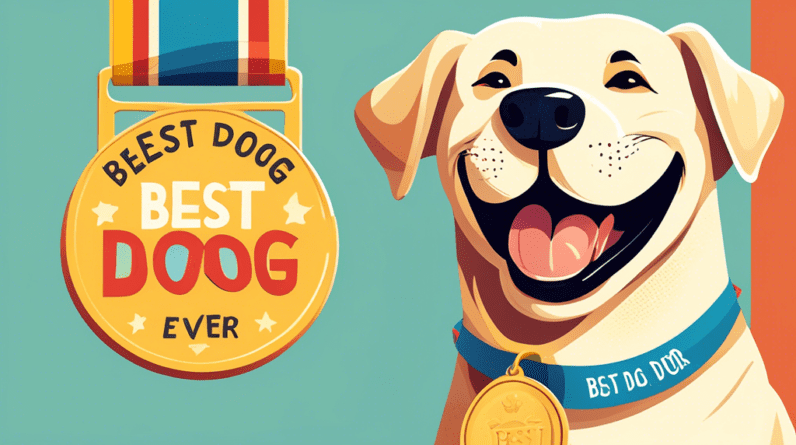
How Much Exercise Do Labradors Need?
Labrador Retrievers are renowned for their boundless energy and enthusiasm. As a highly active breed, they thrive on physical activity and mental stimulation. Understanding their exercise needs is crucial for their overall well-being and happiness. In this comprehensive guide, we’ll delve into the exercise requirements of Labradors, exploring factors such as age, health, and individual energy levels to help you provide the optimal amount of activity for your furry friend.
Factors Influencing Labrador Exercise Needs
Several factors influence how much exercise a Labrador needs, including:
1. Age
A Labrador’s exercise needs change throughout its life stages:
Puppyhood (0-12 Months):
Labrador puppies are bundles of energy, but it’s essential to avoid overexertion during this critical growth phase. Short, frequent play sessions of 5-10 minutes are ideal, gradually increasing the duration as they grow. Focus on low-impact activities like short walks and playtime in a secure area.
Adolescence (1-2 Years):
As Labradors enter adolescence, their energy levels soar. They require more structured exercise, such as longer walks, runs, and interactive play. Aim for at least 60 minutes of exercise per day, divided into two or three sessions.
Adulthood (2-7 Years):
Adult Labradors in their prime need a minimum of one hour of vigorous exercise daily. This can include brisk walks, runs, swimming, fetching, or engaging in dog sports like agility or obedience training.
Senior Years (7+ Years):
As Labradors age, their exercise needs gradually decrease. While they still require regular activity to maintain joint health and mental well-being, it’s essential to adjust the intensity and duration. Opt for shorter walks, gentle play sessions, and mental enrichment activities.
2. Health Condition
If your Labrador has any health conditions, such as hip dysplasia or arthritis, consult with your veterinarian to determine appropriate exercise limitations and modifications. They can recommend specific exercises or activities that are safe and beneficial for your dog’s condition.
3. Individual Energy Levels
Just like humans, Labradors have individual energy levels. Some Labs may be content with an hour of exercise, while others may require more. Observe your dog’s behavior for signs of restlessness, boredom, or destructive tendencies, as these can indicate a need for more activity.
Meeting Your Labrador’s Exercise Needs
1. Walks
Daily walks are essential for Labradors, providing physical exercise, mental stimulation, and an opportunity to explore their surroundings. Aim for at least two walks per day, with one being a longer, brisk walk of 30-60 minutes.
2. Running and Fetching
Labradors are natural retrievers and excel in activities like running and fetching. If your Labrador enjoys these activities, incorporate them into their exercise routine. Use a ball launcher or frisbee to add distance and excitement.
3. Swimming
Swimming is an excellent low-impact exercise for Labradors, especially for those with joint issues. It provides a full-body workout while minimizing stress on their joints. If you have access to a safe body of water, consider letting your Labrador swim.
4. Dog Sports
Engaging in dog sports is a fantastic way to provide physical and mental stimulation for your Labrador. Agility, obedience, rally, and dock diving are just a few examples of sports that Labradors excel in. These activities challenge their minds and bodies while strengthening your bond.
5. Interactive Play
Interactive play sessions, such as tug-of-war or hide-and-seek, are great for bonding with your Labrador and providing mental stimulation. Choose toys that encourage physical activity and engagement, such as puzzle toys or interactive feeders.
Signs Your Labrador Needs More Exercise
It’s essential to recognize the signs that your Labrador may need more exercise. These can include:
- Restlessness and pacing
- Excessive barking or whining
- Destructive chewing or digging
- Weight gain
- Difficulty settling down or sleeping
Tips for Exercising Your Labrador
Here are some additional tips for exercising your Labrador:
- Start gradually and increase exercise intensity and duration over time.
- Exercise your Labrador during cooler parts of the day, especially during hot weather.
- Always provide fresh water before, during, and after exercise.
- Use a harness instead of a collar to prevent strain on their neck.
- Be mindful of your Labrador’s limits and avoid overexertion.
- Make exercise fun and engaging to keep your Labrador motivated.
Conclusion
Providing adequate exercise is crucial for the physical and mental well-being of your Labrador Retriever. By understanding their exercise needs based on age, health, and individual energy levels, you can create an exercise regimen that keeps them happy, healthy, and fulfilled. Remember to consult with your veterinarian for personalized advice and to address any concerns about your Labrador’s exercise routine. With regular physical activity and mental stimulation, your Labrador will thrive as your loyal and energetic companion for years to come.






